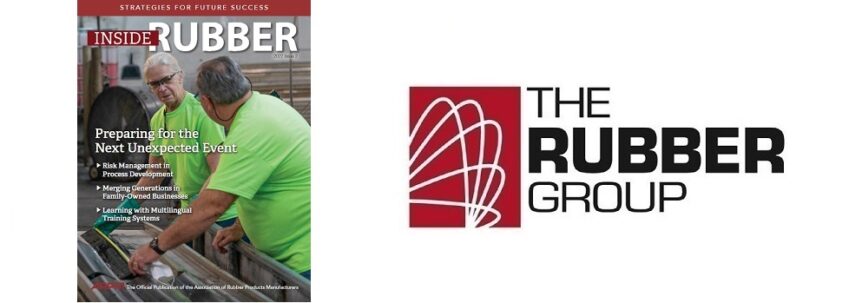Inside Rubber, the official publication of the Association of Rubber Products Manufacturers (ARPM), recently interviewed Rob Pruyn, president of The Rubber Group, for an article about manufacturing resilience and our company’s experience during COVID-19 (Issue 2, 2022). Although the darkest days of the pandemic have passed, manufacturing resilience remains critical as companies everywhere face challenges ranging from shortages of materials and workers to higher interest rates and rising prices.
In “Stress Testing on a Loop: When the Hits Just Keep on Coming”, Inside Rubber writer Liz Stevens asked Pruyn how our Rochester, New Hampshire-based business has fared in terms of workforce, supply chain, and overall financial health. Pruyn candidly described the challenges that we faced, how we addressed them, and how the decisions that we made have made us stronger today. Along the way, Pruyn also shared some valuable lessons that other businesses can apply to their own operations.
Workforce
Throughout the pandemic, The Rubber Group has worked hard to keep our workforce healthy. We’ve also leveraged our company’s culture of open communications in new ways. “We try to do regular ‘State of The Rubber Group’ updates,” Pruyn told Inside Rubber, “so that our team knows how things are going.” When social distancing requirements complicated company-wide meetings, The Rubber Group moved these events outside and put stickers in the parking lot to help keep employees six-feet apart.
Email updates were also sent more frequently, and managers emphasized how employee behavior can affect customer relationships. “We probably reinforced that more than ever,” Pruyn said, “to make them understand that if, for whatever reason, we had a significant COVID outbreak in the facility and had to close down, that would seriously impact the customers”. Although The Rubber Group avoided any illness-related closures or interruptions, decreased revenues led to some layoffs during the second half of 2020.
By early 2021, however, business had bounced back. Today, our production headcount is slightly higher than it was before the pandemic. Increased demand has created new challenges, however, and workers can be hard to find. “If we were to face that situation again, I would have tried to maintain employment levels,” Pruyn said, “because having to cut the workforce drastically and then scale back up was very difficult.” Interviewing, hiring, and training all takes time, and the process can be like starting over.
Supply Chain
Even before the pandemic, The Rubber Group emphasized the importance of regular, structured communications with customers and suppliers. The company seeks to build “life-long relationships,” Pruyn said, and “a key to maintaining those relationships is solid, regular communications.” Regardless of what’s happening, it’s always important to share news about pricing and availability. “Even when things were difficult for us,” Pruyn said, “maintaining those relationships was the key to remaining successful.”
Yet, pricing volatility and material availability were still formidable tests. The Rubber Group didn’t have many formal, long-term agreements with suppliers, but had long kept its prices stable. During the pandemic, however, prices rose significantly, and sometimes repeatedly or with short notice. The Rubber Group shared this information promptly while also providing advance notice of material shortages. Re-quoting jobs required resources, of course, but it also helped to keep us competitive for the long haul.
Financial Situation
Although the pandemic caused our company to delay some capital expenditures, Pruyn recalls that “we were in a really decent financial position to weather the storm.” Because The Rubber Group maintains significant cash reserves, we were prepared to face uncertainties and disruptions – some of which continue today. During the early days of the pandemic, we worked to reduce inventory levels as revenue fell. When sales rebounded, however, The Rubber Group was ready to meet rising demand.
“We have become much more willing to increase our inventory value and have built more inventory as a way to mitigate supply chain risks,” Pruyn says. Today, The Rubber Group maintains what may be its highest-ever inventories of raw materials. “Part of that is to support increase business,” Pruyn explained, “but it’s outpacing even that because we are building larger safety stocks as a hedge against the ongoing uncertainty”, whether from shipping delays, material unavailability, or other supply chain challenges.
Manufacturing Resilience for the Future
Whether the next major manufacturing disruption is because of a pandemic, stockouts, renewed price increases, or a natural disaster, it pays to be ready. As The Rubber Group explained to Inside Rubber magazine, it’s important to put plans in place but also to adjust to changing conditions. For more information about The Rubber Group’s COVID-era experience, read the Inside Rubber article online beginning on page 10.

